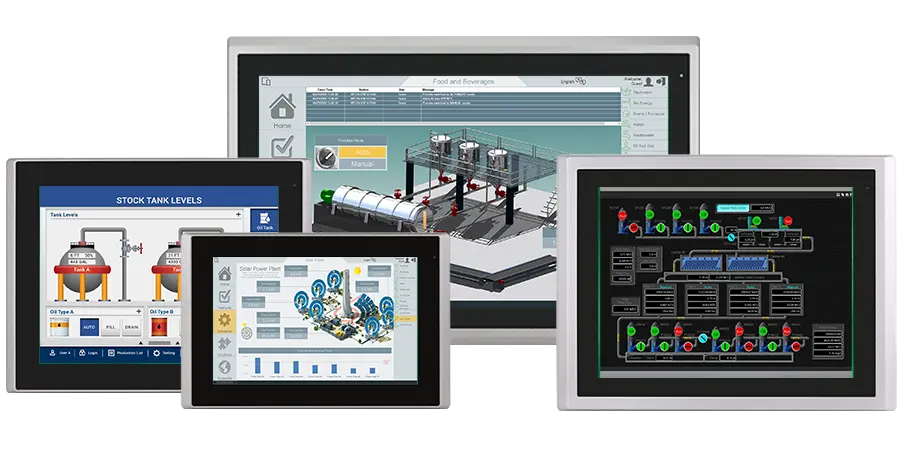10 Things to Consider When Choosing an Industrial Monitor
Choosing the right industrial monitor for a project requires a full understanding of the environment that it will be used in, and the kind of information that needs to be displayed. With dozens of variations on the market, finding a monitor that satisfies all project requirements can be a challenge. To aid with the selection process, the following guide explores 10 things to consider when choosing an industrial monitor.
Introduction
Why choose an industrial monitor instead of a cheaper consumer model? The answer is that industrial monitors differ significantly from standard PC monitors in design, durability, and functionality. Industrial monitors are specifically engineered to withstand harsh environments and offer features that cater to specific industrial needs. Having so many variations on the market can make it hard to know how to choose an industrial monitor that will check all the boxes for your project needs. Below we will highlight ten important factors to consider when choosing an industrial monitor, ensuring you make an informed decision that aligns with your operational requirements.
1. Connection Ports
One of the first things to consider when selecting a new industrial monitor is whether it has ports that will enable it to connect to the rest of your equipment. There are many styles of video connection ports, each with their own characteristics and advantages. In an industrial setting, the most commonly used ports include VGA, HDMI, DisplayPort, and DVI, though there are many other options available on the market.
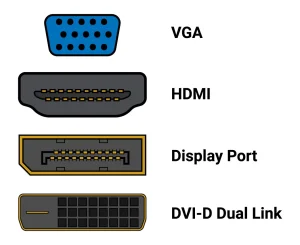
It is also important to keep in mind that different ports have different capabilities. For example, a VGA port is capable of displaying at a maximum resolution of 1920×1080 pixels (1080p), with display quality dropping off rapidly at higher resolutions. If a higher resolution is required, say for a large screen viewed from a distance, then HDMI, DisplayPort, or DVI would all be better choices.
2. Size and Resolution
The display size and resolution of an industrial monitor are crucial factors that depend on your project’s requirements and the available space at the installation site. Larger screens are needed for detailed visual tasks, but they require higher resolutions to maintain clarity. It’s important to balance the screen size with adequate resolution to ensure clear and crisp display quality, especially in industrial settings where precision is key.
Screen Size
The physical dimensions of the screen are an important consideration when selecting an industrial monitor. Smaller screens are more cost-effective, and may be perfect for situations where you need to display limited information at once or when space is at a premium.
For applications requiring the display of large amounts of complex information on a single screen or for visibility from greater distances, larger screens are more suitable. However, to prevent blurring, these larger screens must display at a higher resolution. Therefore, it is important to ensure that the device connecting to the monitor can send high resolution output.
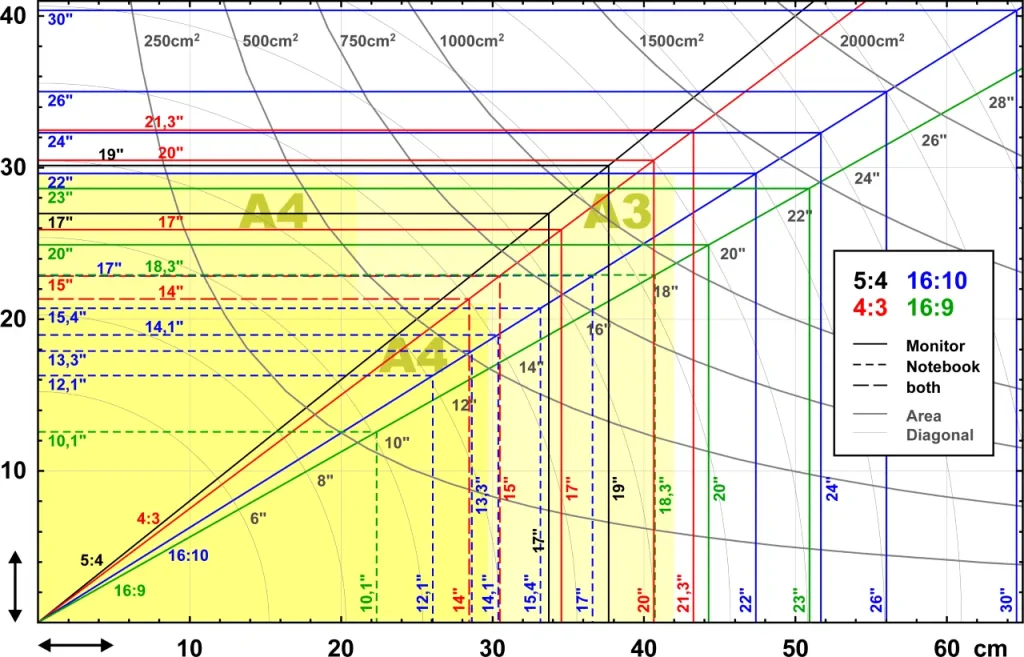
Resolution
Display resolution is a measurement of the number of pixels present on a screen and is a major component of the overall picture quality that a screen can display. In general, screens with higher resolutions display images with finer detail and clarity compared to lower resolution counterparts, making them well-suited for larger screens.
However, not all applications require high resolution output. If a project requires that the display only shows a few simple objects, a lower resolution display may suffice. Evaluating the project’s scope and determining the monitor’s specific use is essential before deciding on the required resolution. If unsure, it may be better to err on the side of higher resolution, as this will allow for future growth.
3. Operating Temperature
When choosing a new industrial monitor, consider the ambient temperature at the intended location of use as a critical factor. Monitors are designed to operate within specific temperature ranges. Therefore, it is important to select a model capable of sustained operation under the existing conditions in the area where it will be used.

For example, manufacturers typically rate a standard consumer model for operation in temperatures ranging from 0º to 50º C (32º to 122º F), whereas a “wide temp” model can often sustain use in temperatures ranging from -20º to 60º C (-4º to 140º F). Operating monitors in temperatures outside their specified range may cause display errors or other failures. Therefore, it is best practice to thoroughly evaluate the on-site conditions and select a monitor rated for that specific environment.
4. Touch Input
Monitors with touch input are a popular choice in many industrial facilities, as they allow operators to quickly interact with controls without the need for a separate input device such as a mouse or keyboard. Monitors with touch capabilities combine user input and data visualization into a single interface, allowing users to view feedback data and take action without looking away from the screen. While there are several different methods of touch input detection, resistive and capacitive touch are the most common styles used in industrial facilities.
Resistive
Resistive touch input was the first widely adopted form of touch detection. This input method is a pressure sensitive system that consists of two transparent layers of electrode film overlaid on top of each other with a gap between them. When an operator presses down on the screen, the compression of the soft top layer of electrodes contacts the bottom layer, allowing the HMI to detect the location of that point. Screens using resistive touch technology typically cost less than capacitive screens and enable operators to interact with the HMI while wearing gloves or using an object like a stylus to touch points on the screen.
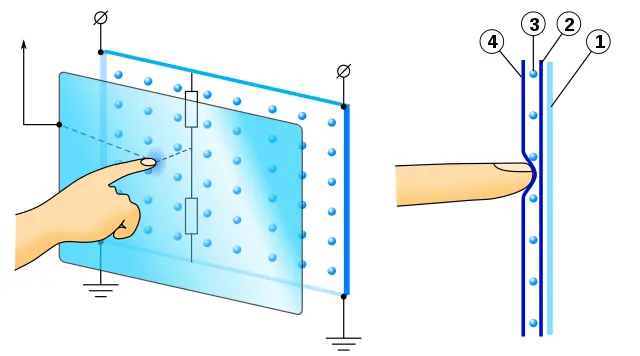
Capacitive
Unlike resistive touchscreens, capacitive input does not require pressure to activate. Instead, the screen will detect input when it contacts a conductive surface such as bare skin. When the user touches a point, the screen will detect a change of capacitance at that location and register it as input. While capacitive screens are typically more accurate and responsive than a resistive screen, they can be more expensive, and the user must touch the screen with a conductive surface, which may not be practical for some work environments.
Projected Capacitive (PCAP)
Commonly used in modern mobile devices such as phones and tablets, projected capacitive screens use a similar approach to detect input as regular capacitive screens do, but with some critical differences. PCAP screens will still read changes in capacitance to detect touch input, but they are more sensitive, have greater display clarity, and can detect multiple points of input at once, allowing for multi-touch control.
Compared to standard capacitive touch, PCAP screens are generally better at detecting touches when the operator is wearing gloves, though thicker gloves may prevent the screen from detecting input. If there is a need to use a stylus, be aware that it will need to have a conductive material on the tip for a PCAP screen to be able to detect it.
5. Mounting Options
Industrial monitors come with various mounting options to cater to different industrial environments. VESA and RAM mounts offer versatility for different setups while providing a standardized mounting system. Panel and rack mounts are specific to certain industrial settings and are essential for ensuring that the monitors are securely and ergonomically placed in the work environment.
VESA Mount
The Video Electronics Standards Association (VESA) established one of the most popular standardized mounting systems in use today. VESA mounts are widely used because they support a range of movements such as tilting, swiveling, and height adjustment. This versatility makes them ideal for environments requiring frequent adjustment of the viewing angle. Their universal design allows VESA mounts to accommodate a variety of monitor sizes and weights, making them suitable for diverse industrial applications.
RAM Mount
RAM (Round-A-Mount) mounts offer robust and flexible mounting solutions with their typical ball and socket system, allowing for almost infinite adjustability. This feature makes them particularly suitable for environments where frequent repositioning of monitors is necessary or where vibration is a concern, such as in vehicles or on heavy machinery. Their popularity also stems from their durability, making RAM mounts a good choice for harsh industrial settings.
Panel Mount
Panel mounting involves integrating the monitor into a flat surface, such as a control panel or a wall. This type of mount is common in control rooms, manufacturing floors, and other areas where space is at a premium. Panel mounts offer a sleek and space-saving solution, as the monitor sits flush with the surface, reducing its footprint. They are also less prone to accidental impacts, which is crucial in busy industrial environments.
Rack Mount
Designers create rack-mounted monitors for integration into standard equipment racks, commonly found in server rooms, data centers, and communication hubs. These monitors, typically used in network monitoring and server management, are tailored to fit standard 19-inch racks and often feature a foldable design to conserve space. This configuration suits environments where space optimization and centralized control are crucial priorities.
6. Optical Bonding
Screen glare can negatively impact an operator’s ability to read and understand what is shown on the display, which can lead to increased time-to-decision and user errors. Optical bonding addresses this issue by adding an additional layer of glass to the screen and completely filling any air gap that may exist with optically clear adhesive or resin. Screens with optical bonding have multiple advantages over standard touch screens.
Reduced Glare and Reflection
In industrial settings, monitors are often used in brightly lit environments or outdoors, where glare from sunlight or artificial lighting can severely hinder screen visibility. Optical bonding effectively reduces glare and reflections by eliminating the air gap between the glass cover and the display panel. This results in a clearer and more readable display, crucial for operators who rely on these screens for critical information.
Enhanced Durability and Shock Resistance
The process of optical bonding adds an extra layer of strength to the monitor’s display. By filling the gap between the screen and the glass with a resin or adhesive, the screen becomes more resistant to shocks and vibrations. This is particularly beneficial in industrial environments where equipment may be exposed to rough handling or mechanical stress.
Decreased Condensation and Fogging
In environments with fluctuating temperatures or high humidity, condensation and fogging can occur within the air gap of non-optically bonded screens, obscuring the display. Optical bonding eliminates this air gap, thereby significantly reducing the likelihood of condensation and ensuring that the screen remains clear under varying environmental conditions.
Improved Contrast and Image Quality
The elimination of the air gap also helps in enhancing the contrast and color vibrancy of the display. This is because less light is lost through reflection within the monitor, allowing for a brighter and more vivid image. Better contrast is essential in industrial applications where clarity of display can impact decision-making and operational efficiency.
Touch Screen Functionality
For industrial monitors with touch screen capabilities, optical bonding can improve the sensitivity and accuracy of the touch interface. Since there is no air gap, the touch experience is more direct and responsive, which is critical for applications where precision is key.
Longevity and Maintenance
Monitors with optical bonding are generally more durable and have a longer lifespan. They are less prone to damage from dust and moisture infiltration, common issues in industrial environments. Additionally, the reduced glare and improved contrast mean less eye strain for users, contributing to a more ergonomic work environment.
Optical bonding is a valuable feature for industrial monitors, addressing several challenges faced in harsh industrial settings, and is a critical factor to consider when selecting monitors for such environments.
7. Brightness

In brightly lit environments, high-brightness monitors are essential. They ensure the display remains visible and clear under intense light conditions, which is crucial for maintaining operational efficiency and safety. Screen brightness is often measured in units known as “nits”. A typical consumer-grade screen may have an output anywhere between 200-600 nits, while units capable of displaying above 1000 nits are classified as high-brightness.
When installing a monitor in a location with glare or high ambient light levels that could hinder an operator’s ability to identify screen objects, having a monitor capable of displaying at high brightness levels may be essential for the operator to perform their tasks and monitor values on the screen. Increased brightness also allows for viewing the display from greater distances than would be possible with a standard monitor.
Keep in mind that monitors capable of high-brightness output generate more heat and consume more energy than standard monitors. Make sure that you install the unit in a location where heat can dissipate quickly without affecting other devices.
8. Viewing Angle
The viewing angle of an industrial monitor is an important consideration, especially in collaborative spaces or where the monitor is viewed from various positions. As the viewer moves further away from a perpendicular angle in relation to the screen, the contrast and overall visibility will decrease dramatically. A wider viewing angle ensures that the display remains clear and readable from different angles, enhancing the monitor’s usability in dynamic industrial environments.
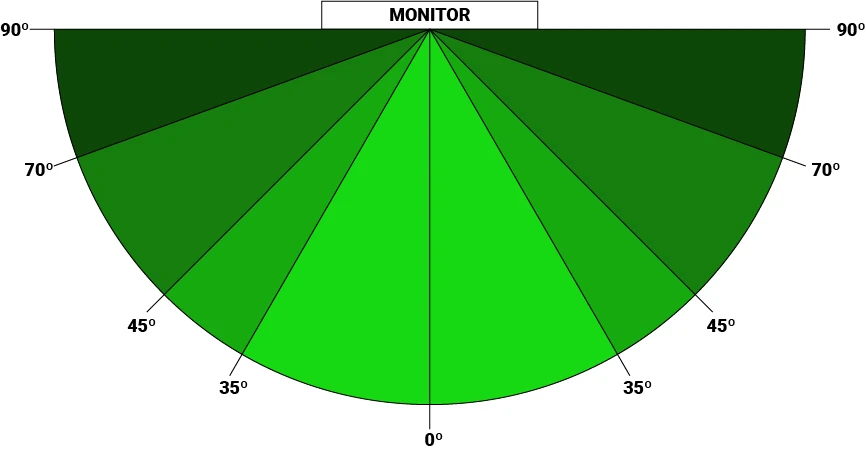
In the diagram shown above, we measure the viewing angle in degrees, starting from the center of the screen and moving outward. In this scenario, the screen’s center point stands at 0 degrees, and the value increases up to a maximum of 90º as the viewing angle aligns parallel to the screen. So the output on a monitor that claims to have a 70º viewing angle should remain clearly visible with little to no reduction in contrast until the viewing angle exceeds 70º.
9. Enclosure Material
The choice of enclosure material for an industrial monitor is pivotal in determining its durability and suitability for specific environments. Options like aluminum, steel, and stainless steel offer varying degrees of robustness and resistance to environmental factors like dust, moisture, and chemicals.
- Plastic: While plastic enclosures are more cost-effective, they offer certain benefits beyond pricing. They are lightweight, which makes them easy to install and handle. Plastic is also non-conductive, reducing the risk of electrical hazards. In terms of insulation, plastic provides good thermal and electrical insulation, protecting the internal components of the monitor. However, they are generally less resilient to factors such as impact and chemical damage.
- Aluminum: Aluminum enclosures are known for their excellent strength-to-weight ratio, making them both durable and lightweight. This material is naturally corrosion-resistant, which is beneficial in environments with high humidity or exposure to certain chemicals. Aluminum also has good thermal conductivity, helping to dissipate heat effectively and keep the monitor’s internal components cool. Its sleek appearance also lends a modern look to the equipment.
- Stainless Steel: Stainless steel is highly resistant to corrosion, making it ideal for use in extreme environments, such as those with exposure to chemicals, saline atmospheres, or continuous cleaning processes. It is also very durable and resistant to both impact and high temperatures. Stainless steel enclosures are often used in food processing, pharmaceuticals, and other cleanroom applications due to their ease of cleaning and minimal risk of contamination. However, they tend to be more expensive and heavier than other materials, which may impact installation and mounting.
10. Certification
Challenging environmental conditions and safety regulations may require that a device is certified by a trusted organization to ensure that it is safe to use when exposed to adverse conditions. When installing devices in facilities with high humidity, liquids, dust, or other hazardous materials that can damage sensitive electronics and jeopardize safety and productivity, it is extremely important to ensure the device has certification to operate under the specific conditions of the work site. This kind of certification is often a legal requirement for devices installed in certain environments.
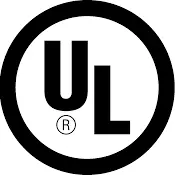
UL
Underwriters Laboratories (UL) is an independent science and safety organization that evaluates and certifies products, processes, and materials to ensure that they meet industry standards for safety and reliability. UL stands as one of the world’s most trusted organizations for safety and reliability testing, and many areas often require their certification.

Class I, Div 2
The UL organization issues this certification specifically for devices used in hazardous locations. Class I, Div 2 certified devices are designed to operate safely in environments where flammable gases or vapors may be present under abnormal conditions.

NEMA
The National Electrical Manufacturers Association (NEMA) uses a standard rating system to assess electronic devices and determine whether the enclosure used for a device is capable of resisting ingress from water or other potentially damaging materials.

CE
Conformite Europeenne (CE) is a European standard that assesses products to certify that they meet safety, health and environmental protection requirements and is a requirement for devices being sold in much of the European Union.
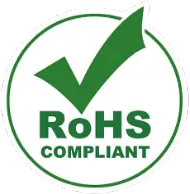
RoHS
The European Union adopted the Reduction of Hazardous Substances (RoHS) initiative to reduce the harmful effects of dangerous substances on people and the environment. RoHS certification indicates that a product does not contain unsafe levels of chemicals deemed hazardous. This includes testing for heavy metals such as cadmium, lead, and mercury, and other potentially dangerous elements.
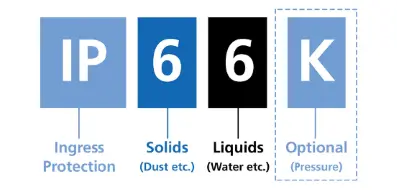
Ingress Protection (IP)
The International Electrotechnical Commission (IEC) developed the Ingress Protection rating system, which measures the ability of a device’s housing to prevent dust, moisture, and liquids from entering and damaging the internal components. Defined in the international standard IEC 60529, the IP rating system includes two numbers. The first number shows the housing’s protection level against solid foreign objects like dust, while the second number indicates its resistance to water ingress. For instance, IP69 represents the highest rating in this standard, indicating devices that are dust-tight and protected against high-pressure and high-temperature water jets.
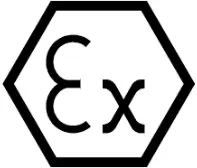
ATEX
The ATEX directive, a certification system developed for use in the EU, assesses whether a device can be used safely in environments with explosive materials. Within the EU, all devices used in hazardous or explosive atmospheres require ATEX certification.

FCC
The Federal Communications Commission certification confirms that a device’s electromagnetic radiation falls within established limits and should not interfere with other electronic devices’ operation in the surrounding area. Any device capable of operating in the radio frequency range of 9 kHz to 3,000 GHz requires FCC certification.
Conclusion
Choosing the right industrial monitor involves balancing various factors such as connectivity, display quality, operational environment, and durability. The right choice not only enhances efficiency but also ensures reliability and longevity in demanding industrial applications. For more information about industrial monitors sold by Maple Systems, please visit our monitor product page.
